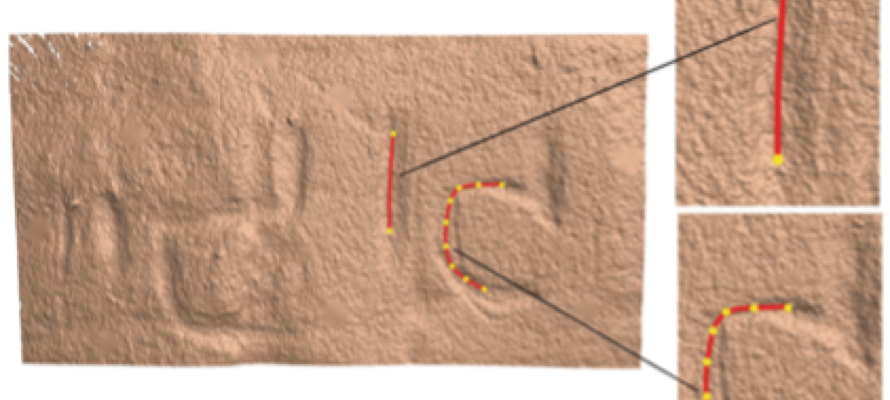“Our research provides a fresh perspective on ancient rock engravings by delving into the intricacies of their production processes.”
By United with Israel Staff
Researchers at the Hebrew University of Jerusalem (HU) have developed a new 3-D software that they have used to extract and analyze engravings from ancient Israel, American Friends of Hebrew University announced, citing a scientific study.
According to the study, published in Nature Humanities and Social Sciences Communications, the software, known as ArchCUT3-D, extracts thin, 3-D slices of man-made engravings using “micromorphological incision recognition” to analyze production techniques.
As part of the study, researchers scanned engravings from Timna Park in the Arava Desert near Eilat in southern Israel. The findings showed that engravings were created using distinct techniques, “stroking” and “peeling,” enabling researchers to potentially distinguish an engraver’s level of skill and previous experience.
The team hopes their findings will lead to further research and inspire interdisciplinary collaborations to gain greater insight into the secrets behind ancient rock engravings.
“Our research provides a fresh perspective on ancient rock engravings by delving into the intricacies of their production processes,” says Professor Leore Grosman, Head of the Hebrew University Computational Archaeology Laboratory.
“By unlocking the technological secrets behind these engravings, we gain valuable insights into the craftsmanship, artistic expression, and cultural context of our ancestors ─ even the background of each engraver,” he added.
The research team also included Lena Dubinsky, a doctoral candidate at the Hebrew University of Jerusalem’s Institute of Archaeology, and Dr. Marcelo David, a researcher and lecturer at the university’s Computational Archaeology Laboratory. The software is available for downloading here.
